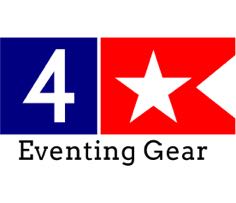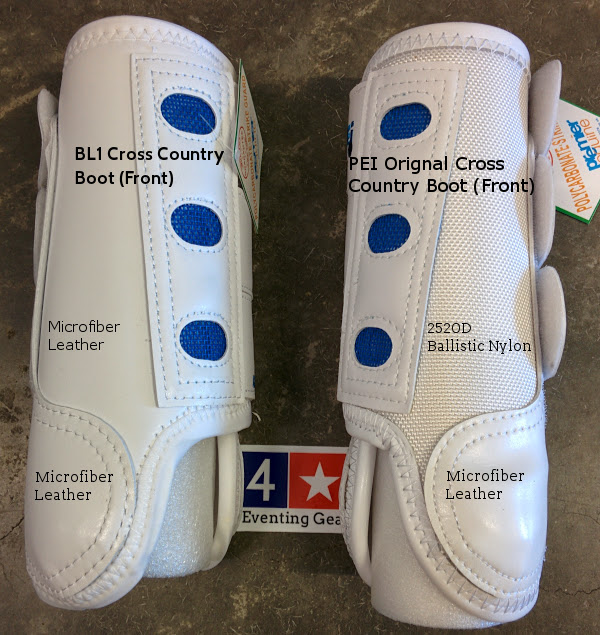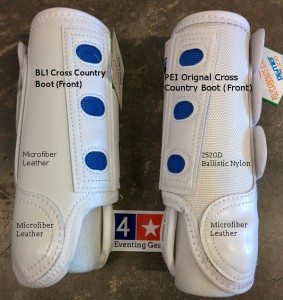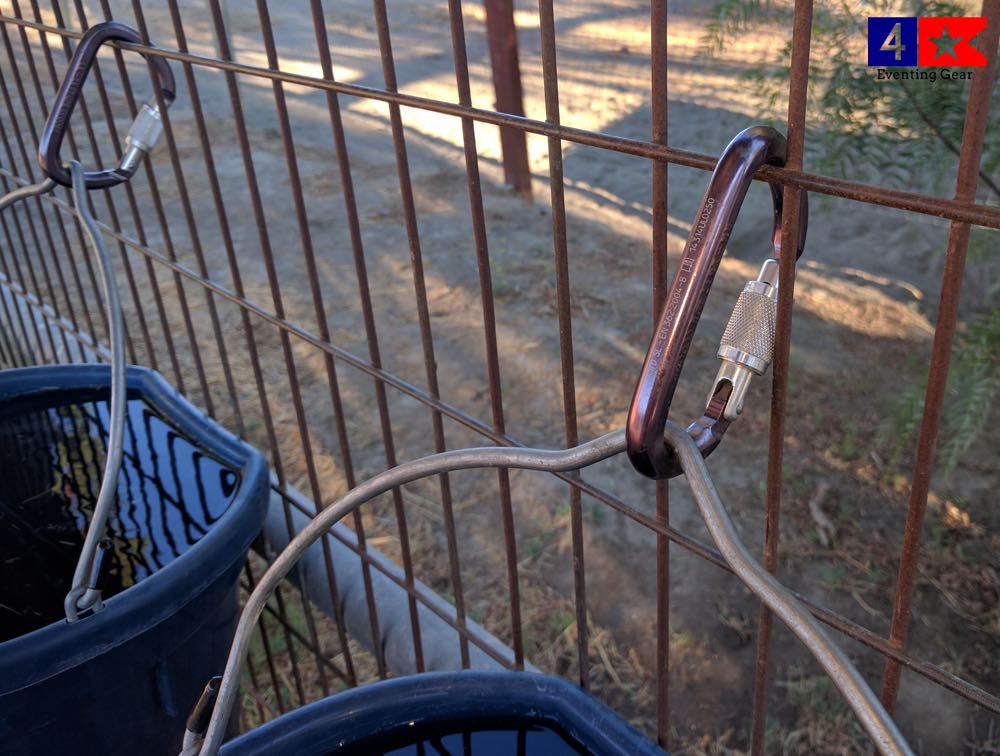
What’s Best?
When it comes to securing things in your horse’s stall, safety and reliability are the two most important factors. What do we secure to stalls? Both at home and at shows we secure water buckets, slow feed hay bags and feed tubs. At shows, we secure stall guards. There are two traditional ways to secure these items: double ended snaps and stall hooks. We’re introducing another way – carabiners. Each of the three have their pros and cons.
Double Ended Snaps
The double ended snap is an equestrian staple. It’s found everywhere – including the garbage can. These pieces of hardware are made of cheap metal with a cheap spring to hold the latch shut. They have the strength to hold about 100 lbs before breaking.
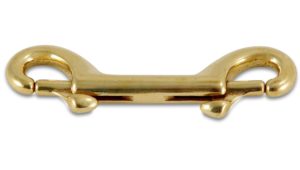
Pros:
- Safe when pointing the correct direction
- Inexpensive
- Multiple uses
- Widely available
- Holds just enough weight
- Fast on / off (assuming there is no rust / corrosion)
Cons:
- Unsafe if pointed the wrong direction (in image, wrong way!)
- Will corrode over time – either open if spring is broken or rust closed
- Spring will break over time or the snap lever – like in the image
- Only holds 100 lbs, max
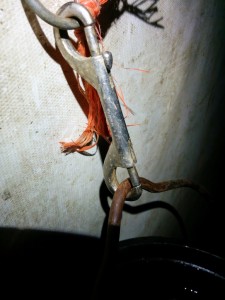
Stall Hooks
Stall hooks are made of powder coated wire. They have no sharp edges and come in different lengths. Stall hooks don’t close / lock so they’re only good for holding water buckets and grain buckets.
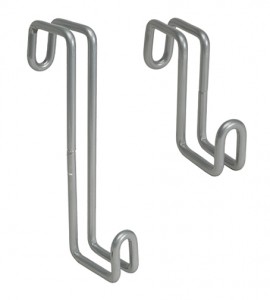
Pros:
- Long lifespan
- Safe
- Won’t corrode, no moving parts
- Won’t easily bend
- Will fit over side of temp stall that doesn’t have D-rings
- Fast on / off
Cons:
- Will only hold water buckets and grain buckets
- Take up a bit more space than carabiners or double ended snaps
- No way to lock in buckets – a playful horse can disconnect buckets and “play” with them… break… them
Carabiners
There are multiple carabiners out there. We’re suggesting using any of the various locking carabiners on the market. Twist lock carabiners are easy to snap onto D-rings in temp stalls or onto your fense at home. With an extremely high tolerance to the elements, the higher cost will pay for itself.
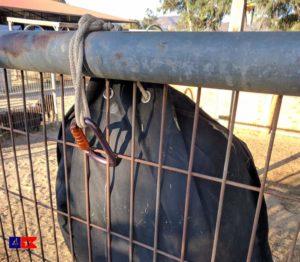
Pros:
- Locking carabiners are safe to use in stalls
- Extreme tolerance to the elements – won’t rust, corrode
- Will work to secure buckets and stall guards
- Will hold a ton of weight – great for slow feed hay bags that are pulled all day
Cons:
- About twice as expensive as a double ended snap
- with the long life, it will pay for itself
- Thicker metal may not fit all d-rings or stall guard chains
- Slower on / off with twist lock. Can overcome this with a tri-lock / auto lock carabiner
